An attic is an indoor space located directly below a pitched roof of a house or a building. It is often used for storage or as a living space. Attics come in different shapes and sizes and can serve various purposes depending on house designs and homeowners’ preference. They are often accessed through a hatch or a pull-down ladder and can be a great place to store seasonal items and unused belongings. Despite their usefulness, attics are vulnerable to pests, moisture, and poor insulation, which can lead to damage to the structure and increased energy costs. In this guide, we’ll look at the essential things to know about attics, including pest control, insulation types, and ventilation options.
Need an expert insulation contractor to improve attic, walls or basement?
Call us (509)201-4190 or send the form
Disclaimer: The information provided in this article is offered as a guide only. While we have taken great care to ensure the accuracy of the information, we cannot be held responsible for any errors or omissions. Furthermore, it is strongly recommended that you consult with experienced professionals such as Advance Roofing LLC (https://advanceroofingllc.com/) for advice specific to your particular situation. We are always happy to help! For many years, Advance Roofing LLC has been providing Spokane, WA and its surrounding areas with superior roofing solutions at the highest standards of quality.
Types of Attics
Attics come in different styles and structures, ranging from the traditional method of a space above the roof to the more modern approach of converted attics. Different types of attics offer unique benefits and challenges, and knowing the kind of attic you have is essential, especially when it’s time to explore attic-related projects. In this segment, we’ll take a closer look at the various kinds of attics and explore their features and benefits.
Gable-End Attic
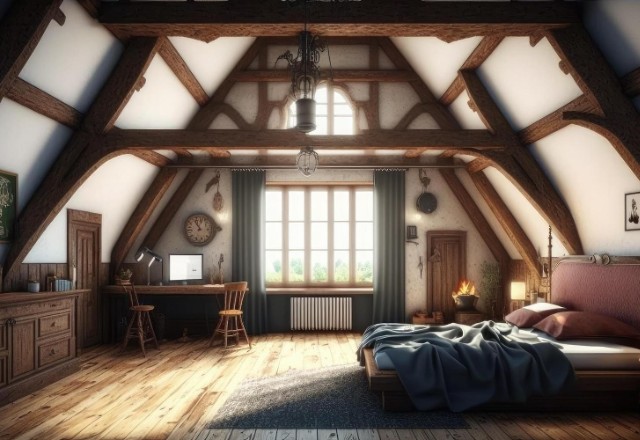
A gable-end attic is a distinct type of attic that is located at the end of the house’s gable roof. It is one of the most common types of attics found in residential homes in the United States. This style of attic is often triangular in shape and features sloping walls that extend up from the edge of the ceiling to the roof peak.
Gable-end attics offer several benefits to homeowners.
- First, they provide additional storage space, which is often needed in homes that lack sufficient storage areas.
- Additionally, gable-end attics can be renovated into living spaces, giving homeowners a cost-effective way to add more living area to their homes.
- Compared to other types of attic, gable-end attics offer a unique set of benefits. They are typically larger than other types of attics and can accommodate larger items such as furniture and bulky storage containers.
- Additionally, the triangular shape of the gable-end attic allows for ample headroom, making it a comfortable space to move in, even for taller people.
Gable-end attics can be constructed using a variety of materials, including wood, metal, and vinyl. The most popular materials include wood and metal as they offer durability and are visually appealing. The cost of installing a gable-end attic depends on the size of the attic and the materials used to build it. The cost of materials can range from $6 to $12 per square foot, while installation costs can range from $2,000 to $10,000.
Proper insulation and ventilation are necessary for any attic, including the gable-end attic. Improving insulation is highly recommended to enhance energy efficiency. Options for insulation include blown-in cellulose, fiberglass batts, or loose-fill insulation. Cost of installation may vary, but expect to pay anywhere from $1,500 to $3,000. Adequate ventilation is also necessary to prevent humidity and moisture problems, which can lead to structural damage and mold growth. The most common types of attic ventilation are gable vents or ridge vents.
To ensure that the gable-end attic functions properly, regular maintenance is required. Homeowners should inspect the attic annually or more frequently if they notice any issues such as pest infestations, moisture, or insufficient insulation. It is also important to ensure that the insulation and ventilation systems are in good condition. Failure to maintain the gable-end attic can lead to significant problems in the long run.
Hip Roof or Mansard Attic
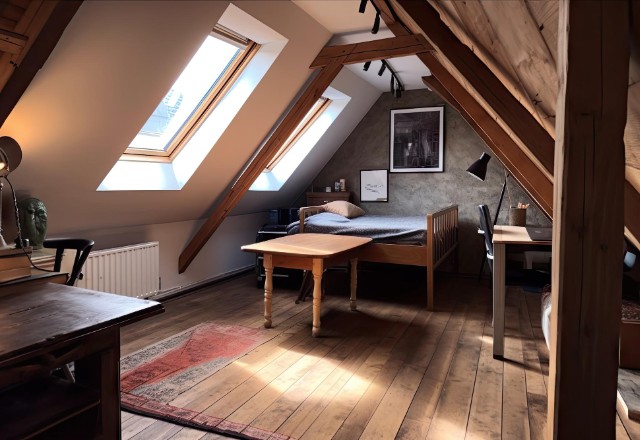
The Mansard or Hip Roof Attic is a unique type of attic that offers distinct characteristics and notable features not found in other types of attics. This type of roof, commonly used in French architectural styles, is characterized by a double-sloped roof structure with a lower slope that is steeper than the upper slope. The Mansard roof style creates additional living space within the attic due to its unique shape and construction.
Compared to other types of roofs, the Mansard roof offers more usable space, making it an ideal choice for homeowners looking to maximize their living space. Its unique design, which maximizes the square footage of the attic, is particularly popular with homes that have smaller footprints. The additional living space created by the Mansard roof can be used for various purposes, including an extra bedroom, home office, or entertainment room.
The popularity of the Mansard roof style is often seen in certain architectural styles, including Second Empire, Beaux-Arts, and Queen Anne. This type of roof adds value to a home, not just due to its additional living space but also because of its unique and aesthetically pleasing appearance. The Mansard roof can greatly enhance the overall look of a house, making it stand out in a neighborhood.
Homes with Mansard roofs have been utilized in various ways. Some have been converted into luxurious living spaces complete with grand staircases leading to the attic and skylights that provide natural light. Other homes have repurposed their Mansard attics into home offices, art studios, and even gyms. The possibilities of how to use the additional living space created by the Mansard roof are endless and dependent on the needs and desires of the homeowner.
Shed Roof Attic
The Shed Roof Attic is a type of attic that has gained popularity in modern homes with minimalist architecture. This type of attic is characterized by a sloping roof with only one
pitch, providing a sleek and straightforward design that complements the overall minimalist theme of the house.
Shed Roof Attics are typically situated at the uppermost level of a building and offer ample space for storage or functional living areas. Homeowners often utilize this space as an extra bedroom, home office, art studio, or entertainment room. Its versatility makes it a preferred option when looking to expand a home’s living space without the need for significant structural changes.
The design of the Shed Roof Attic is not just simple but also very sophisticated. It adds a unique character to the house while remaining functional and practical. The elegance of the sloping roof is emphasized by its clean and uninterrupted lines. This type of attic also provides an opportunity for homeowners to play with natural light, utilizing skylights or dormer windows to create a naturally lit space.
Gambrel Roof Attic
Gambrel Roof Attics are a unique type of attic that is characterized by its distinctive shape. The Gambrel Roof Attic design is easily recognizable, featuring slopes on both sides of the roof, with the lower slopes having a steeper pitch than the upper slopes. This design creates more usable space within the attic, making it a popular choice for homeowners looking to add extra livable space to their homes.
One of the defining features of the Gambrel Roof Attic design is the steeper pitches on the lower portions of the roof. This allows for a taller and more spacious attic area, which can be used for a variety of purposes. On the upper portions of the roof, the pitches are usually flatter, which can make it easier to install windows or skylights to bring natural light into the attic area.
Gambrel Roof Attics are commonly used as living space, such as an extra bedroom, home office, or playroom. They are also popular as storage space since the higher ceilings and unique shape create more room for vertical storage. Compared to other types of attics, the Gambrel Roof Attic can offer more headroom, making it a more comfortable living space.
However, there are some disadvantages to the Gambrel Roof Attic design. Due to the unique shape of the roof, storage space may be limited, especially in the corners of the attic. In addition, the construction of the Gambrel Roof Attic can be more complex and costly than other types of attics.
Saltbox Roof Attic
The Saltbox Roof Attic is a unique style of attic that evolved from traditional New England architecture. This type of attic gets its name from its resemblance to a wooden container used to store large amounts of salt called a “saltbox.” One side of the roof is longer than the other, creating a distinctive sloping shape that is both functional and aesthetically pleasing.
To make use of the space in this type of attic, you may need to install floorboards and stairs. Once you have created a functional space, you should also consider lighting and ventilation. Ventilation is particularly important in the attic to prevent mold and mildew growth and to keep the space cool in the summer months.
When planning and designing a Saltbox Roof Attic, there are a few key elements that you should keep in mind. The slope of the roof is an important factor as a steeper slope will allow for more headroom and potentially more storage space. The pitch of the roof should also be considered as this will affect the amount of natural light that enters the space. Finally, the size of the attic should be carefully considered to ensure that it meets your needs while still allowing for proper ventilation and insulation.
Common Uses for an Attic Space
If you’re lucky enough to have an attic space in your home, you may be wondering what to do with it. Attics can be more than just a storage space for old belongings. With a little bit of planning and creativity, you can transform your attic into a functional and comfortable living space. Let’s explore some common uses for an attic space and provide tips on how to make the most of this versatile area in your home.
Storage Space
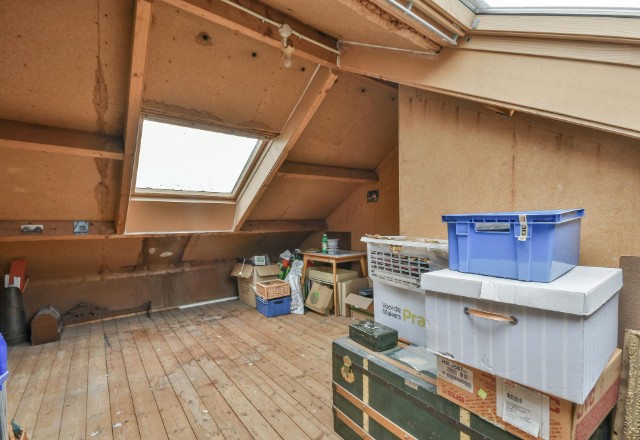
Attics can provide a unique storage solution for homeowners who need additional space to keep items out of sight but within easy reach. With proper planning and organization, attics can be transformed into an organized and efficient storage space. Here are some tips for utilizing your attic storage space:
- Sort and organize items: Start by sorting through your items and separating them based on usage and frequency. Keep frequently used items in easily accessible areas while packing away less used items in labeled boxes. Group similar items together, and label each box accordingly.
- Invest in storage solutions: Shelving units and plastic bins are excellent options for organizing your attic storage space. In addition to saving space, they help keep your stored items off the floor and protected from potential damage.
- Store seasonal items: Holiday decorations, seasonal clothing, and sports equipment are common attic-friendly items that can be stored. Maximize your attic storage space by utilizing walls and ceiling to hang items such as skis or sleds.
When using your attic for storage, it is important to prioritize safety. Provide enough light by installing additional lighting fixtures or using portable lamps. Install handrails or use caution when accessing the attic to minimize the risk of tripping or falling.
Home Office or Study Room
Are you struggling to find a quiet and secluded space in your home to study or work from home? Look no further than your own attic! With the right planning and setup, your attic can be transformed into a comfortable and productive home office or study room.
Having a dedicated workspace in a quiet and secluded area of the home can significantly increase productivity and reduce distractions from other areas of the house. The added privacy of an attic can also provide a sense of separation between work and home life.
To convert your attic into a functional home office or study room, there are a few considerations to keep in mind.
- Comfortable furniture, including a sturdy desk and supportive chair, is essential for long hours of work or study.
- Proper lighting, such as a combination of natural light and task lighting, can also help prevent eye strain and headaches.
- Reliable internet and electrical connections are necessary for online work or study.
It’s important to remember that an attic can be prone to extreme temperatures, making sufficient insulation and ventilation crucial for comfort and energy efficiency. Proper insulation can help regulate temperature and prevent heat loss in the winter and heat gain in the summer. Adequate ventilation can also improve air quality and prevent moisture buildup.
Playroom for Kids and Teens

Transforming your attic space into a playroom for kids or teens can provide a safe and fun environment for play and leisure activities. Here are some design tips and ideas to create a functional and kid-friendly space:
- Consider the age and interests of your kids: When designing the playroom, consider your kids’ ages and interests. For younger children, you may want to incorporate a play kitchen, a puppet theater, or a reading nook with colorful cushions and pillows. For older kids and teens, you could add a gaming area, a music corner, or a cozy lounge space.
- Organize the space with designated zones: To maximize the playroom’s functionality, organize it with designated zones for different activities. Consider creating a reading nook with a comfy chair, bookshelves, and a rug for quiet time. For crafty kids, set up a table with chairs and supplies for painting, drawing, or building projects. And for active play, create a space for games and toys.
- Choose durable, easy-to-clean materials: Kids are prone to spills and accidents, so it’s crucial to choose durable and easy-to-clean materials for the flooring and furniture. Consider using stain-resistant carpet tiles, vinyl flooring, or rubber mats to protect the floors. Choose furniture made of durable materials like wood or metal that can withstand wear and tear.
- Incorporate bright colors, patterns, and textures: Adding pops of color and texture to the playroom can make it more inviting and cheerful. Consider using bright colors like orange, yellow, or turquoise for accent walls, furniture, or decor. Use patterned fabrics or wallpaper to create a fun and playful atmosphere.
- Add plenty of storage solutions: To keep the playroom clutter-free and organized, add plenty of storage solutions like shelves, bins, and cabinets. Consider using wall-mounted organizers for craft supplies or hanging baskets for stuffed animals. Make sure to label the storage containers to help your kids put things back where they belong.
Creating a functional and fun playroom in your attic can provide a dedicated space for your kids to play, learn, and explore. With these design tips and ideas, you can transform your attic space into an exciting and kid-friendly playroom.
Additional Bedroom or Living Space

Attics are often overlooked spaces in many homes, but they can be transformed into additional living space with a little bit of creativity and the right setup. For homeowners looking to expand their living area, converting the attic into a comfortable and livable spare bedroom or cozy living room and entertainment area could be the perfect solution.
- One of the first things to consider when planning an attic renovation is ensuring that the space meets building codes and has enough headspace for people to move around comfortably.
- It’s also important to provide adequate natural light and air circulation, which can be achieved by adding windows or skylights.
- Another crucial factor in making your attic livable is insulation and ventilation. Proper insulation will keep the space warm in winter and cool in summer, and can help reduce energy bills. Ventilation is also essential to ensure that the space is well-aerated, comfortable, and free of moisture and mold.
- In addition to these important considerations, adding a staircase to the attic is also essential to make it easily accessible. This could involve creating a new staircase or modifying an existing one, depending on the structure of the home.
With the right design and attention to detail, attics can be transformed into a comfortable and functional living space that adds significant value to your home. Whether you need an extra bedroom for guests or a cozy living room for relaxing and entertaining, an attic renovation can be an excellent solution for expanding your home’s living area.
Artist’s Studio or Workshop Area
Turning an attic into an artist’s studio or workshop area can create a unique and inspiring space for those who enjoy art or crafts.
- One of the key features that makes an attic a great choice for an artist’s studio is the abundance of natural light that tends to come through the roof and larger windows. Adequate lighting is essential when working on art, and the natural light from the windows can help provide additional inspiration and energy.
- Privacy is another important factor when it comes to an artist’s studio. A converted attic can offer a sense of privacy that’s difficult to find in other areas of the home, making it easier for creative individuals to concentrate on their projects without interruption.
- Additionally, the attic’s location at the top of the house can help control outside noise, making it an ideal place to focus and concentrate.
- While the layout of the attic will largely depend on the specific needs of the artist or craftsman, it will typically involve considerations such as storage space, equipment placement, and adequate electrical outlets. For example, workshops may require additional ventilation systems to control dust and fumes, while artist’s studios may require more open space for canvases and other large pieces of art.
When designing the space, it’s important to maximize its functionality while still keeping the artist’s inspiration in mind. This can involve adding skylights or additional windows for natural light, or creating built-in storage units for supplies and equipment. Additionally, adding an HVAC system or air conditioning may be necessary to ensure that the space remains comfortable and safe for extended periods of time.
Attic Insulation Basics: Types, Benefits, and Costs of Installation
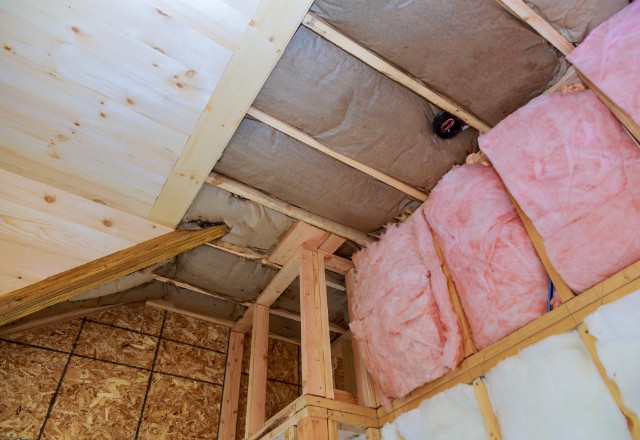
Proper insulation in the attic is crucial for maintaining energy efficiency and saving costs. An inadequately insulated attic can lead to significant heat loss during winter and heat gain during summer. This loss and gain can overwork your HVAC system, leading to higher energy costs. Therefore, it is essential to insulate your attic to regulate indoor temperatures and reduce energy consumption.
There are several types of attic insulation available in the market, each with its unique benefits. The most common types include:
- Fiberglass batts insulation
- Blown-in cellulose insulation
- Loose-fill fiberglass insulation
- Rock wool insulation
- Mineral wool insulation
Fiberglass batts insulation are made of tiny glass fibers that are shaped into batts, which are sheets of insulation. They come in standard sizes that fit snugly to fill the cavities between joists and rafters, providing excellent soundproofing and thermal resistance. Blown-in cellulose insulation, on the other hand, comprises recycled materials such as shredded newspaper treated with boric acid for pest control. It is an excellent choice for irregularly shaped attic spaces and offers a seamless insulation solution. Loose-fill fiberglass insulation is blown into the attic space using an insulation blower. It is preferred for its excellent heat transfer resistance and resistance to moisture. Rock wool insulation is made from molten rock and minerals, and it offers superior fire resistance and excellent sound insulation. Mineral wool insulation effectively repels moisture and is an excellent solution for cold climates.
When choosing insulation for your attic, consider factors such as your budget, climatic conditions, and building codes. The R-value is another crucial consideration, as it determines the insulation’s efficiency in resisting heat flow. The higher the R-value, the better the insulation’s performance. Also, a vapor barrier should be included to protect your insulation from moisture.
The installation cost for attic insulation varies depending on the type of insulation chosen. Fiberglass batts insulation costs around $0.85-$1.50 per square foot, blown-in cellulose costs $1-$1.50 per square foot, and spray foam insulation costs $1-$2 per square foot. Although the installation cost may seem high, it is a worthwhile investment that can significantly reduce your energy costs in the long run.
Attic ventilation
Attic ventilation is a crucial aspect of maintaining a healthy and energy-efficient home. Proper ventilation in the attic helps to prevent heat and humidity buildup, which can cause mold growth and damage to the roof. Inadequate attic ventilation can lead to high energy bills and premature aging of the roofing system. In this article, we’ll explore the importance of attic ventilation and discuss the different types of attic ventilation options available.
Why is Attic Ventilation Important?
Attic ventilation is imperative in maintaining a healthy and efficient home. Efforts need to be taken to move excess heat and moisture out of the attic. During the warmer months, heat from the sun can cause the temperature in the attic to rise above 120 degrees Fahrenheit. This extreme temperature can cause the roof to deteriorate, leading to premature aging and damage. Also, moisture buildup from humid air or condensation can cause rotting in the roof deck, attic insulation, and even framing.
Attic ventilation helps prevent these issues by removing excess heat and moisture and improving airflow throughout the attic. The removal of this heat and moisture from attic space will help to prolong the lifespan of the roofing system and prevent structural damages.
Types of Attic Ventilation
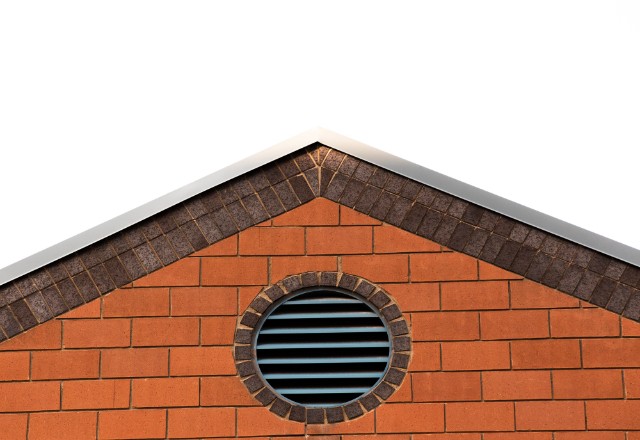
There are several types of attic ventilation to consider when installing or upgrading ventilation in the attic. The three most common types are Ridge vents, gable vents, and soffit vents.
- Ridge Vents: Ridge vents are located along the peak of the roof and allow hot air to escape from the attic. This type of ventilation system is highly effective, as it evenly distributes airflow across the entire roof. Ridge vents are commonly used in combination with soffit vents, which allow cool air to enter the attic and replace the hot air that has been released through the ridge vent.
- Gable Vents: Gable vents are placed in the vertical walls of the attic and often come in decorative shapes such as half-circle or diamond. Gable vents work well in conjunction with other ventilation systems such as ridge or soffit vents.
- Soffit Vents: Soffit vents are placed along the underside of the roof eaves or overhangs, and they allow cool air to enter the attic space. Soffit vents work in conjunction with ridge vents; the cool air entering through soffit vents pushes the hot air out through the ridge ventilation system.
Appropriate Ventilation Based on Building Codes
It is essential to consider the appropriate amount and location of attic ventilation based on building codes when installing ventilation in the attic. The International Residential Code requirement is a minimum of 1 square foot of ventilation for every 300 square feet of attic space. This ensures proper airflow and ventilation in the attic.
Attic care
An attic can be a valuable space in any home, whether it is used as storage or converted into living space. But proper attic care is essential to keep the space safe, functional, and free from unwanted critters. Regular inspections and maintenance are key to preventing potential issues.
One of the most important aspects of attic care is ensuring it is well-ventilated. A properly ventilated attic helps prevent moisture buildup and mold growth, which can cause significant damage to the attic’s structure and pose a health hazard to the inhabitants. Moisture buildup can also compromise the effectiveness of insulation and increase energy bills, as your HVAC system works harder to regulate temperature.
Air leaks are another potential culprit that can lead to energy inefficiency, as they let in outside air and reduce the effectiveness of insulation. They can also provide entry points for pests like rodents and insects. Sealing any air leaks is crucial to preventing these issues.
Regularly inspecting the attic for signs of infestation is also important. Pests like rodents and insects can cause damage to the attic’s structure and insulation and spread diseases. To prevent infestation, keep the attic clean from debris and dust, especially if you’re using it for storage.
Finally, inspecting the roof for any signs of damage or leaks is another critical aspect of attic care. A leaky roof can lead to significant structural damage and create an ideal environment for mold and pests to thrive.
Attic pest control
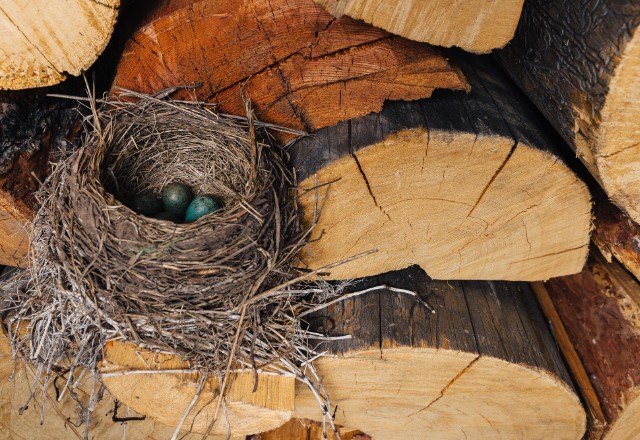
Your attic can be a welcoming habitat for various pests. Common attic pests include rodents, birds, bats, and insects, which may cause damage to the structure and insulation of your home. Not only do these pests cause damage, but they can also pose a health hazard to you and your family.
The signs of an attic infestation can vary depending on the type of pest you are dealing with.
- Rodents, such as rats and mice, leave droppings and gnaw marks on wires and wood.
- Birds and bats may leave nests and droppings.
- Iinsects often leave small piles of debris.
Paying attention to these warning signs can help you identify a potential pest infestation in your attic.
To eliminate pests from your attic, there are several effective pest control methods you can try.
- Traps and repellents can be useful for catching and repelling rodents and insects, respectively.
- Sealing off any entry points, such as gaps in the roof or walls, can also prevent pests from entering your attic.
- If you’re dealing with birds or bats, installing special vents or netting can help keep them out while still maintaining sufficient airflow.
For more severe infestations, it’s recommended to hire a professional pest control service. Professional exterminators have the expertise and tools to tackle severe pest infestations, and they can help prevent future reoccurrences. Moreover, if the infestation poses a health hazard, such as a bat infestation, it’s crucial to hire a professional service to remove them safely.
Conclusion
It’s crucial to understand the significance of proper attic insulation and ventilation, especially for energy efficiency and avoiding structural damage. Therefore, it is recommended that you consult local building codes for insulation guidelines and consider hiring a professional insulation installer to ensure the correct insulation level.
Additionally, it’s essential to develop a comprehensive attic maintenance plan that includes scheduled inspections and pest control. By doing so, you can prevent future infestations and keep your attic in optimal condition.



 509-201-4190
509-201-4190
